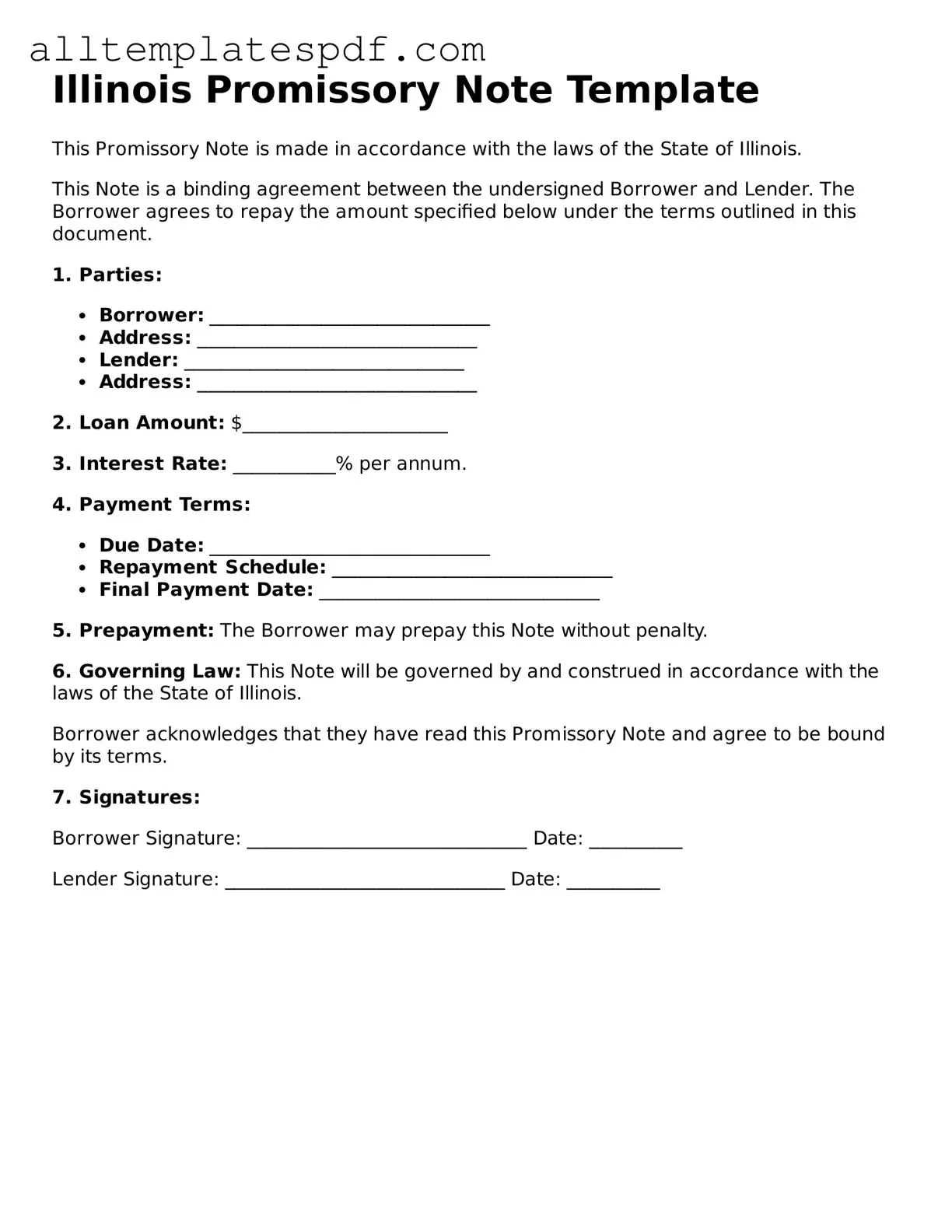Blank Promissory Note Template for the State of Illinois
A promissory note is a legal document that outlines a borrower's promise to repay a specified amount of money to a lender under agreed-upon terms. In Illinois, this form serves as a crucial tool for individuals and businesses alike, ensuring clarity and enforceability in financial transactions. To get started on your own promissory note, fill out the form by clicking the button below.
Open Editor
